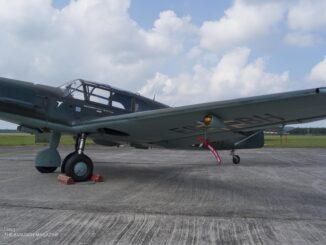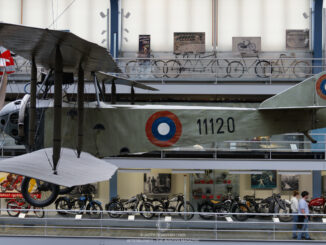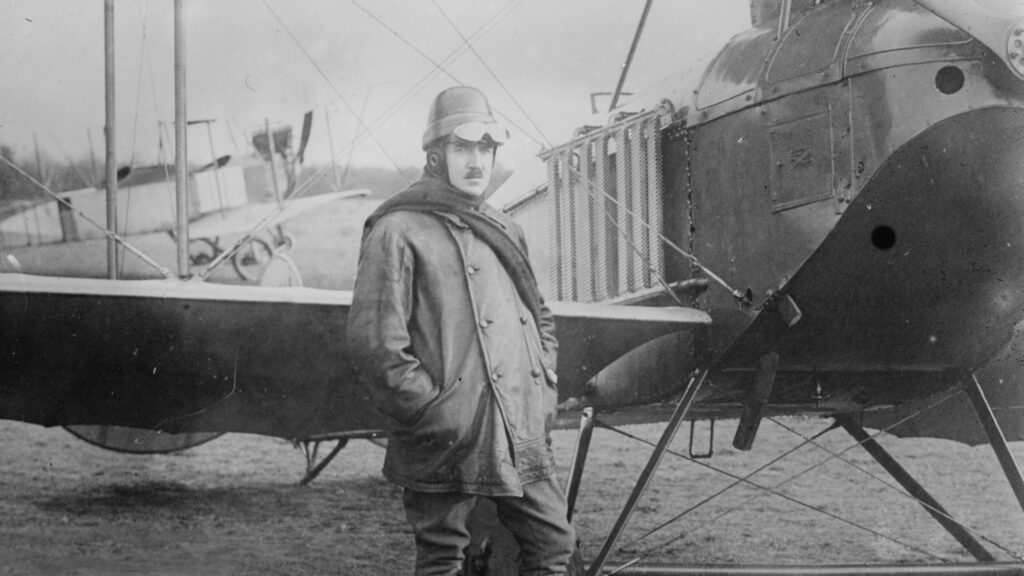 During the year 1914, German aviation pioneers set several flight endurance world records, successively increasing the time they spent in the air, without refuelling. Although the last record in that series remained unbroken for more than a decade, the outbreak of the Great War overshadowed their achievements and caused those brave pilots sunk into oblivion.
During the year 1914, German aviation pioneers set several flight endurance world records, successively increasing the time they spent in the air, without refuelling. Although the last record in that series remained unbroken for more than a decade, the outbreak of the Great War overshadowed their achievements and caused those brave pilots sunk into oblivion.
In the early years of aviation, flight endurance was one of the popular categories of the aviation records. The pioneers were setting the bar higher and higher, showing the rapid development of aviation and proving practical advantages of an aircraft.
The first flight of powered, heavier-than-air aircraft – Wright Flyer, on 17th December 1903 – lasted only twelve seconds. The Wright brothers needed almost two years to extend that time to approximately one hour. On 5th October 1905, Wright Flyer III piloted by Wilbur Wright stayed in the air for 59 minutes and 23 seconds.
In the next several years, the Wrights continued their development and on 31st December 1908, finally flown for 2 hours, 18 minutes and 33 seconds with Wright Model A.
An interesting fact is that first eighteen officially recognized flight endurance records were set by the Wright brothers. During those early years, Europe lagged behind and was only learning to fly. In November of 1907, Henri Farman became the first European to stay in the air for more than one minute (click here to read the Farman´s story). At that time, the Wrights were performing flights that lasted about one hour.
However, the European aviators and aviation industry did their homework and shortly found themselves at the forefront of the world aircraft development. On 3rd November 1909, Henri Farman stayed in the air for already 4 hours and 17 minutes, flying the aeroplane of his own design. That event started a series of French flight endurance records achieved in Farman and Blériot aircraft. It lasted until the end of 1912 and Alexandre Fourny´s record flight with Farman MF-2, lasting 13 hours and 22 minutes.
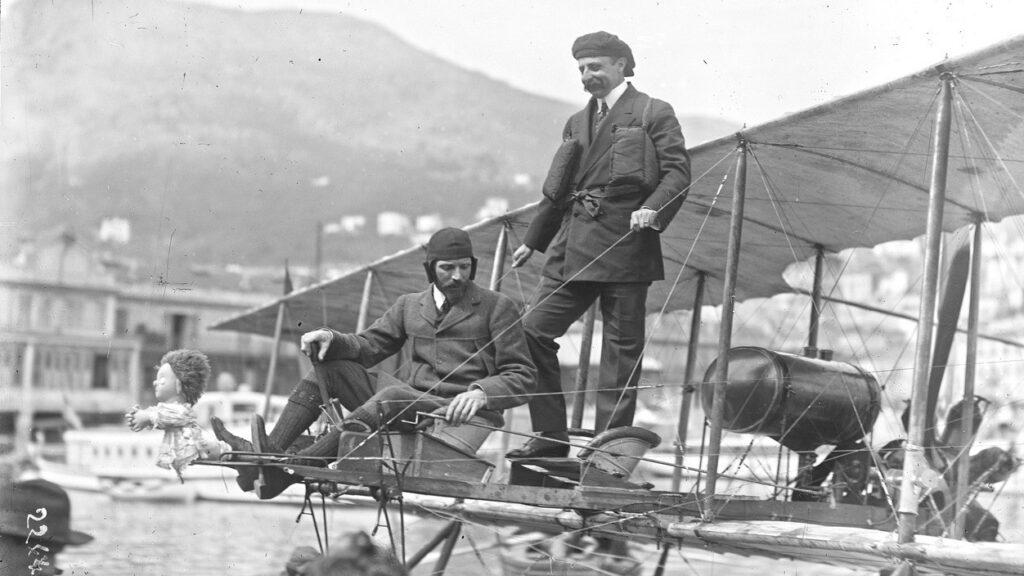
At that time, German aviation industry was generally considered to be behind the times. However, the coming years had to prove it was just underestimation.
The winning streak of German aviation began in the early 1914. On 3rd February, aviation pioneer Bruno Langer set the new world flight endurance record, staying in the air for 14 hours and 7 minutes. Nevertheless, he held that record for only four days.
On 7th February 1914, another German aviation pioneer, Karl Ingold, stayed in the air for 16 hours and 20 minutes. The record flight covered 1,700-kilometre-route from Mülhausen (today Mulhouse, in France) to Kreuz near Posen (today Krzyż Wielkopolski, in Poland). According to the contemporary press, Ingold flew with Aviatik ´Pfeil´ biplane, powered by 100 hp Mercedes engine and used approximately 600 litres of fuel.
Almost immediately, Langer made an attempt to break the Ingold´s record. On 11th February he made the flight on the same route to Kreuz, however he was 20 minutes short to tie the record.
On 13th February 1914, the British aviation magazine ´Aero´ reported about Langer and Ingold, as well as their record flights. The article was concluded with a statement that recently the German aviators made a great progress and showed the Allied aviation the danger of resting on their laurels. In addition, the magazine expected that milestone of staying in the air for more than 24 hours would be broken until the end of the year. Following months showed they were prophetic words.
On 24th June, a Rumpler company test pilot Gustav Basser set the bar higher by staying in the air for 18 hours and 10 minutes. The record was set with Rumpler B.I biplane.

Basser´s record was broken in just a few days later by Werner Landmann, during his failed attempt to pass through the 24 hours mark. On 28th/29th June, Landmann achieved a milestone of 21 hours and 49 minutes, then being forced to land due to heavy rainstorm. He flew with Albatros B.I, powered by a 75 hp engine.
It did not take long for German aviators to exceed the important milestone. The record of staying in the air for 24 hours was set on 10th/11th July 1914 by Reinhold Böhm (Boehm). The German pilot and his Albatros B.I biplane stayed in the air for 24 hours and 12 minutes without refuelling. As Böhm reported after landing, he could easily continue the flight for a couple of hours more but run out of fuel.
Regrettably, the outbreak of the Great Work caused a break in that successful series of German flight endurance records. The war overshadowed efforts of the German aviation pioneers and soon their names were almost forgotten.
Nowadays, we know very little about their lives and aviation career. A few information can be found in newspapers of the time, however they often include incorrect spelling or names of their aircraft.
Bruno Johannes Emil Martin Rudolf Hermann Langer was born in 1893. In 1910, he enlisted the armed forces and shortly after began his training as a military pilot. Two years later, Langer received his pilot´s licence No. 203. Then, he started to work as company pilot for Flugwerk Deutschland GmbH in Munich. In 1913, Langer moved to Johannisthal and became factory pilot at Pfeil company.
His first long-range flight was completed in September of 1913, when he set his first endurance flight record with a passenger, staying in the air for 9 hours and 1 minute. Langer´s series of record-breaking flights won him a 1,000 marks prize from the Mercedes company.
With the outbreak of the war, Bruno Langer joined the German military aviation. He was assigned to Feldflieger Abteilung (Field Flying Detachment) No. 31 on the Eastern Front and was killed in action on 19th October 1914, near Novogeorgievsk Fortress (today Modlin Fortress, in Poland).

Karl Ingold was born in 1880. Before he became the pioneer aviator, Ingold was a bicycle racer. In 1911, he received the German pilot´s licence No. 114. An interesting fact is that his official record at the German aviator register indicated Ingold´s profession as ´Bautechniker´ (construction technician).
After receiving his pilot certificate, Ingold worked as chief pilot at Automobil- und Aviatik A.G. Mülhausen, as well as flew for the Aero Luzern company. His flight record book includes almost twenty flying hours Ingold clocked between 1912 and 1914, flying with passengers around the Lake Luzern. Ingold´s first attempt to set the flight endurance record was reported in 1913, when he flew from Mülhausen to Leipzig within 6 hours.
During the Great War, Ingold also enlisted into the German armed forces. He was assigned to bomber aviation and served with Brieftauben-Abteilung Ostende and then Kagohl 1 (Kampfgeschwader der Obersten Heeresleitung – Combat Wing under direct control of the German Army’s High Command). Karl Ingold survived the war and died in 1956. In the newspapers and magazines from the era, his surname is often misspelled ´Ingolf´ or ´Jingold´.
Gustav Basser received his German pilot´s licence No. 354 on 24th January 1913. As already mentioned above, he worked as the test pilot for Rumpler aviation manufacturer. Basser stayed with the company during the Great War and beyond.
In the 1920, he was involved in Rumpler´s airline activities – in October of 1920, Basser, Ernst Udet and Adolf Doldi were assigned the task to open the Munich-Vienna air route, flying together with three Rumpler C I aircraft. They took-off on 20th October but were not able to reach Vienna that day, due to severe weather conditions and technical issue on Udet´s aircraft.
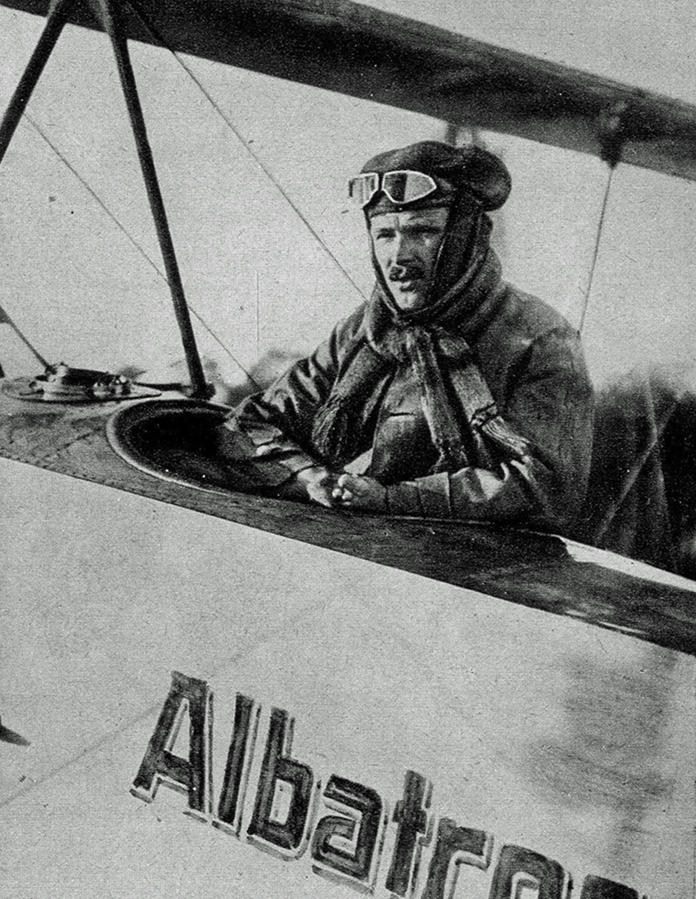
Wilhelm Braemer, Public Domain)
After reaching Vienna, the pilots were accused of breaching the Allied ban on flights in Germany. Although they pointed out that all permissions and authorization were obtained by the airline company, it turned out that Edmund Rumpler distanced himself from that flight. Eventually, aircraft were taken over by the Entente authorities and three pilots, together with their passengers, returned to Munich by train. And this was the end of Rumpler´s international airlines.
Next, Gustav Basser moved to aviation service workshop in Johannisthal, where he worked with sports aircraft. In 1937, he moved to Zwickau, where he opened his own aviation maintenance company – Gustav Basser KG. During the World War II, the company was taking care of repair of combat aircraft, including Focke-Wulf Fw 190s. It was probably the reason the workshop was bombed into the ground by the Allied forces in 1944.
After the war, Basser moved to the West Germany. He became the member of Traditionsgemeinschaft ´Alte Adler e.V.´, an association gathering the ´Old Eagles´ – the survivors from 814 German pioneer pilots that received their licence before the 1st August 1914. In 1966, Gustav Basser was assigned the president of the association, the post he held until his death on 20th October 1968.
Werner Landmann received his pilot´s certificate No. 723 on 8th April 1914, just a few months before his record flight. With the outbreak of the Great War, he became a military pilot, but his career was very short. In October of 1914, Landmann was shot down on the Eastern Front and spent the rest of the war as POW in Russia.
After the war, Werner Landmann worked as a chief test pilot for Rohrbach Metall Flugzeugbau G.m.b.H. – due to the Allied ban on German aviation manufacturing and development, Landmann established a Rohrbach´s subsidiary in Denmark. The company developed a few designs of reconnaissance and bomber aircraft, one of them was even bought for evaluation purposes by the Japanese naval forces. Regrettably, in August of 1928 Werner Landmann died of cancer.

Reinhold Böhm (also spelled as Boehm), was born in 1890. He received the pilot´s licence No. 382 on 18th April 1913. The register indicated his profession as ´Schlosser´ (locksmith).
In 1914, during his record flight, he worked as chief company pilot for Albatros. Most probably, Böhm remained in this position during the Great War, as there is no more detailed information about his military career available. The only known fact is he was also a flight instructor, but without any specific details.
In addition, also his post-war life remains unknown. The only information we have managed to find is that Reinhold Böhm died in 1958.
Böhm´s flight endurance record was broken only in 1920, by Lucien Bossoutrot and Jean Bernard from France, flying with Farman F.60 Goliath. They managed to stay in the air for 7 minutes longer than the German pilot in his solo flight. Nevertheless, the new record was set in completely different conditions. The Goliath was a huge, twin-engine airliner, able to carry up to 14 passengers. Its gross weight was 5,400 kg and wing area was 160 m², while the Albatros B.I had respective characteristics of 1,080 kg and 40.6 m².
On 29th / 30th December 1921, the American aviators Edward A. Stinson and Lloyd Bertaud, flying with a Junkers-Larsen JL-6, achieved the flight endurance time of 26 hours and 19 minutes. It was the first record of that category officially recognized by Fédération Aéronautique Internationale – FAI.
Nevertheless, Reinhold Böhm´s flight endurance record in solo category lasted until 1927. It was broken only by Charles Lindbergh during his first solo flight across the Atlantic Ocean, on 20th May 1927.
In 1931, due to safety concerns, FAI ceased to recognize any further flight endurance records in heavier-than-air, powered aircraft category. The last official achievement was made by Walter Edwin Lees and Frederic Brossy. Flying with Bellanca J-2, the American aviators stayed in the air for 84 hours and 32 minutes.
In 1958, Robert Timm and John Cook managed to stay in the air for an incredible 64 days, 22 hours and 19 minutes with Cessna 172. The aircraft was, however, refuelled several times. Nevertheless, their flight endurance record was not beaten until today.
Cover photo: Karl Ingold, Library of Congress, LC-B2- 3017-9, cropped

